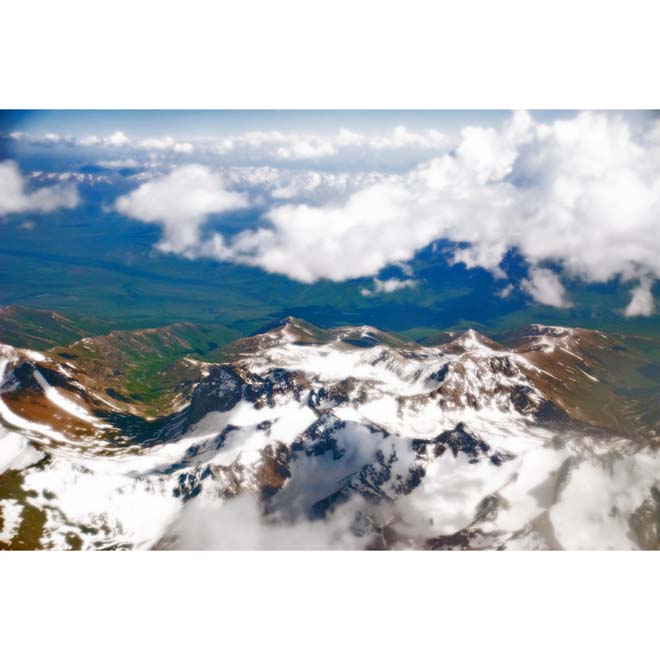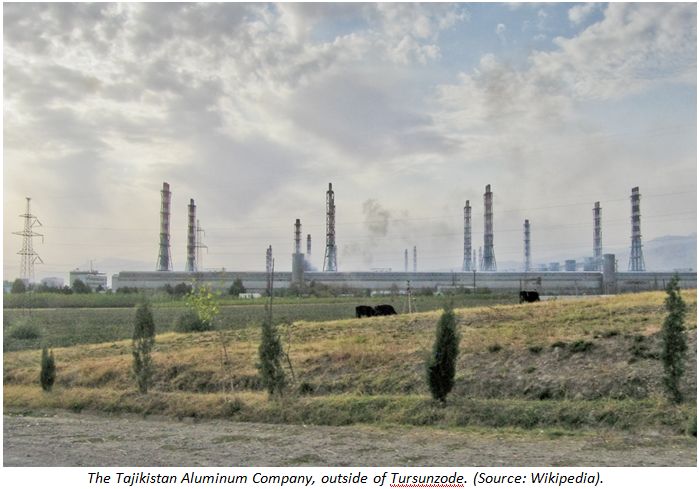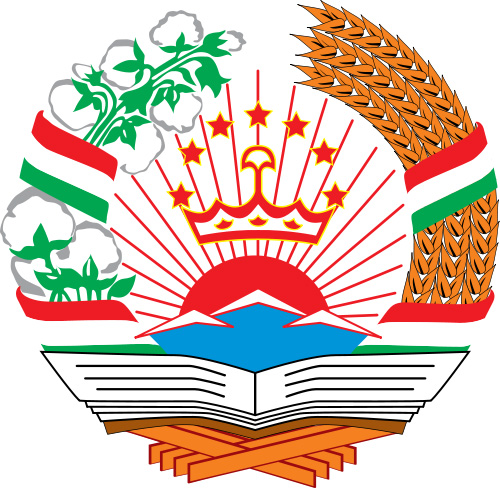Tajikistan's Second National Communication - 2008
Project Overview
The creation of a National Communication offers countries the opportunity to contribute with technically sound studies and information that can be used for designing mitigation and adaptation measures, and project proposals that can and will help increase their resilience to the impacts of climate change. Activities generally include: V&A assessments, Greenhouse Gas Inventory preparation, Mitigation Analysis or Education, and awareness raising activities. The ultimate goal is the integration of climate change considerations into relevant social, economic and environmental policies and actions.
Tajikistan is considered the main glacial centre of Central Asia and glaciers occupy about 6% of the total country. These glaciers form an important function by retaining water, controlling flows and regulating the climate. Glaciers and permafrost are the main source of water recharging the Aral Sea river basins. In Tajikistan’s Second National Communication it is noted snow and glaciers contribute several cubic kilometres of freshwater to the main river basins in Tajikistan. Already, the country has lost more than 20 billion cubic meters of the glaciers’ ice volume (i.e., about 2.5 percent, mostly affecting small glaciers) during the twentieth century; a further increase in temperature will accelerate glacial retreat. Rainfall tends to be sporadic and in recent years (e.g., from 1999 to 2002) most precipitation has occurred in the winter and spring, causing droughts during main agricultural seasons. On the other hand, in 2007-2008, the area experienced extreme cold winter (the coldest since 1969) with increasing demand for electricity. This, coupled with high prices for food and fuel, led to the so-called 2008 Central Asia energy crisis.
Project Details
Tajikistan is a landlocked country situated in the mountainous part of Central Asia. It covers an area of 143,100 square kilometres and has a maximum width of about 700 km and a maximum length of about 350 km. Tajikistan is considered a low-income country; over two-thirds of the population lives on less than US$2.15 a day. Tajikistan's economy was seriously weakened by the civil war lasting from 1992 to 1997, but is now making a slow recovery. The main sectors of the economy are non-ferrous metallurgy (lead, zinc and aluminum), light industry and agriculture, with cotton being its most important export commodity (World Bank, 2010). Access to energy, especially in rural areas, is a significant challenge for Tajikistan (UNDP, 2009). Many rural communities use wood from forests for heating houses and cooking, which is negatively impacting biodiversity, increasing erosion and potentially augmenting vulnerability to the impacts of climate change (World Bank, 2011).
There is an abundance and diversity of natural resources in Tajikistan, including glaciers, lakes, flora, fauna and forests. Some of Tajikistan's adaptation projects include: improvements to the transportation network, modernization of industries to reduce greenhouse gas production, development of water saving technologies, construction of additional renewable energy sources, shore protection activities to better manage natural disaster risks and reforestation. 93% of Tajikistan’s terrain is comprised of mountains, to the east there is Pamir the most harsh and mountainous region and in the central region there are the Kuhiston mountain ranges. The west of Tajikistan is covered by low hills and irrigational plantations and in the north there is the Ferghana valley and the Kuramin range. The climate is characterised by aridity and extreme differences in temperature between seasons and amongst regions. There is also considerable inter-annual variability in the climate. Forests are considered to play an important role in Tajikistan because they regulate the climate and serve as a source of raw materials.
Tajikistan is considered the main glacial centre of Central Asia and glaciers occupy about 6% of the total country area. These glaciers form an important function by retaining water, controlling flows and regulating the climate. Glaciers and permafrost are the main source of water recharging the Aral Sea river basins. In Tajikistan’s Second National Communication of 31 December 2008 it is noted that the snow and glaciers contribute several cubic kilometres of freshwater to the main river basins in Tajikistan. In general, Tajikistan’s current climate is continental, subtropical and semiarid, with some desert areas. However, the climate changes drastically according to elevation. Already, the country has lost more than 20 billion cubic meters of the glaciers’ ice volume (i.e., about 2.5 percent, mostly affecting small glaciers) during the twentieth century; a further increase in temperature will accelerate glacial retreat. Rainfall tends to be sporadic and in recent years (e.g., from 1999 to 2002) most precipitation has occurred in the winter and spring, causing droughts during main agricultural seasons (Kayumov et al, 2008). On the other hand, in 2007/2008, the area experienced extreme cold winter (the coldest since 1969) with increasing demand for electricity. This, coupled with high prices for food and fuel, led to the so-called 2008 Central Asia energy crisis (UNDP, 2009).
Adaptation Needs and Priorities:
Tajikistan’s Second National Communication (2008) projects that the country will experience increased temperatures of 0.2 to 0.4°C by 2030 compared to 1961 to 1990 temperature averages. Changes in precipitation, however, appear uncertain and depend greatly on the topographic characteristics of the country’s various regions. Future climate change induced threats include increased aridity, seasonal and inter-seasonal alterations of droughts and floods. The effects of warmer temperatures on the country’s water supply are of considerable concern given the importance of glaciers to replenishment of the country’s waterways (Kayumov et al., 2008). Results of the current and potential future vulnerability to climate driven impacts include threats to the stability of the agro-ecosystems, crop failures and increased food insecurity.
Tajikistan is experiencing significant, on-going economic and institutional changes at the same time as it experiences the impacts of climate variability and climate change. Therefore, it is necessary to focus on adaptation responses that directly address the consequences of climate change, while also mainstreaming adaptation to climate change into on-going development programs. These programs include those focused on hydropower development, institution building, and improving community-based support of public infrastructure and services. The latter support should be directed to schools, health facilities and other services that most affect the lives of the poor and aim to reduce poverty (World Bank, 2010).
National Level Policies:
Policy development in the country is centered on climate change mitigation, water and energy efficiency. However, the developed National Plan on Climate Change Mitigation is also focused on exploring opportunities for Clean Development Mechanism (CDM) projects in the forestry and, potentially, agriculture sectors. There are also water tariffs being introduced with the aim of promoting efficient irrigation systems, thereby reducing the amount of water used for irrigation of agricultural land. None of these policies and plans were designed with a specific focus on adaptation to climate change; however, the consequences of such policies and the aforementioned CDM projects should account for the impacts of climate change and could also provide adaptation co-benefits.
Current Adaptation Action:
Relative to other countries in Central Asia, Tajikistan (like Kazakhstan and Kyrgyzstan) has a very high level of engagement in projects related adaptation. A number of initiatives are underway in the country at both the national and regional levels. At the national level, the projects are focused on water resource management, agriculture and disaster management. Funders of these projects include the Global Environment Facility (GEF) and Asian Development Bank, with implementing agencies including the World Health Organisation (WHO), United Nations Economic Commission for Europe (UNECE), and the United Nations Development Programme (UNDP).
At the regional level, the country is participating in projects on water resource management, human health and agriculture. Of these sectors, the most significant attention is devoted to water management. These activities seem to be better integrated with local communities compared to some other countries in the region; especially in the area of water management there is a higher number of projects that are involving local people and communities.81 However, there remains considerable room for enhanced linkages between local and regional adaptation efforts, especially in the following areas: increasing involvement of agricultural producers; collaboration with local water managers; and involving remote and less developed areas in adaptation needs assessments and planning. In addition, Tajikistan is the only Central Asian country participating in the Pilot Program for Climate Resilience, an initiative aiming to reduce vulnerability and build capacity to address climate change, especially through policy mainstreaming and integration. Funders of these regional projects include the Asian Development Bank, European Commission, Germany, the Special Climate Change Fund, and the World Bank.
Assessment:
The Second National Communication submitted by Tajikistan in 2008 provides a detailed review of potential impacts of climate change, their consequences and needed adaptation actions. Some of these actions, especially those focused on water management and agriculture, are being addressed through diverse projects supported mostly by international organizations. Parallel to these initiatives, there are number of development projects also focused on infrastructure development, water management and institutional development implemented by international organizations such as World Bank and UNDP that might also support vulnerability reduction efforts.
Major gaps in the country’s adaptation activities could be listed as follows:
- There is limited integration of adaptation into public infrastructure development and capacity building conducted through development assistance (transportation, energy).
- There is a lack of risk assessments and identification of needed adaptation actions at major industrial infrastructure facilities. For instance, tailings’ ponds and the chemical industry’s ageing storage facilities could be severely affected by climate change, potentially causing major damage to natural and human environments.
- There are a limited number of programs aiming to mainstream adaptation into ongoing institutional reforms, especially in industry and natural resource management. The Pilot Program on Climate Resilience is one exception.
- There is limited emphasis on exploring linkages between poverty and the environment in the context of the need to identify adaptation measures that could improve the well-being of people while managing their ecosystems in a more resilient manner.
- Managing land is a strong priority in the country’s recent National Communication; the focus includes both agricultural production and forestry. While potential adaptation measures related to agricultural production are increasingly being addressed by national actions and participation in regional initiatives, climate change impacts on the forestry sector and required adaptation actions have not yet been addressed to a larger extent.
- Consider improving access to energy especially in rural areas as an important precondition in increasing adaptive capacities at the household level and thus adaptive actions need to account for the lack of energy in these areas.
- Assessments of the gender dimensions of climate change impacts appears to be limited, reflected in the absence of any current or planned adaptation projects in Tajikistan that specifically seek to address gender issues. This understanding would promote the design of adaptation options that could be more effectively implement as they better reflect the needs and circumstances of communities.
- Finally, Tajikistan is a major storehouse of globally important agro-biodiversity and represents one of the centers of origin for cultivated plants worldwide. The richness of the agro-ecosystems is complemented by a large concentration of wild relatives of agricultural plants present in Tajikistan’s mountain ecosystems (including barley, almonds, pomegranates, grapes, apples, pears, cherries and plums) (GEF, 2009). International donors are engaged in supporting projects that protect agro-biodiversity, but perhaps further efforts are needed, including policy frameworks and options that could address biodiversity conservation in the context of other activities such as agriculture, ranging and reforestation.
References:
- Bizikova, Livia; Hove, Hilary; Parry, Jo-Ellen. (2011) “Review of Current and Planned Adaptation Action: Central Asia.” Adaptation Partnership / International Institute for Sustainable Development.
- Kayumov A., Makhmadaliev B., Novikov V., Mustaeva, N. and Rajabov I. (2008). The Second National Communication of the Republic of Tajikistan under the United Nations Framework Convention on Climate Change. Dushanbe: State Agency for Hydrometeorology of the Committee for Environmental Protection. Retrieved from http://unfccc.int/resource/docs/natc/tainc2.pdf.
- United Nations Development Programme (UNDP] (2009). Central Asia Regional Risk Assessment: Responding to water, energy, and food insecurity. New York: United Nations Development Programme, Regional Bureau for Europe and CIS.
- World Bank (2010). Country Profile – Tajikistan. Retrieved from www.worldbank.org/tj.
- World Bank (2011) Tajikistan: Economic and Distributional Impact of Climate Change. Poverty Reduction and Economic Management Unit, Europe and Central Asia Region, Report No. 62211-TJ. Washington DC: World Bank.
Key Results and Outputs
- Sustainable development and the integration of climate change concerns into medium- and long-term planning
- Inventories of anthropogenic emissions by sources and removals by sinks of greenhouse gases
- Measures contributing to addressing climate change
- Research and systematic observation
- Climate change impacts, adaptation measures and response strategies
- Education, training and public awareness
Potential Adaptation Measures:
Natural Resources
- Support and expand the network of protected areas, develop transborder ecological corridors and cooperate with neighboring countries in Central Asia;
- Regulation of alien fish species in water reservoirs;
- Integrated system of plant protection and pest control; and
- Forest fire management and protection of new plantations.
Agriculture and Food Security
- Breeding of crops resistant to drought and salinity;
- Soil protection by plowing across slopes;
- Introduce efficient irrigation systems (drip irrigation); and
- Increase use of organic fertilizers.
Public Health
- Raise awareness of the implications of heat waves for people’s health;
- Conduct vulnerability assessments and identify indicators to measure impacts on health to improve existing programs on diseases prevention; and
- Possible establishment of a specialized area for medical check-ups of the state of health among mothers and children after pathological pregnancies and deliveries.
Freshwater Resources
- Regulate river flow through the construction of dams and diametrical dikes;
- Channel dredging and flow straightening works; and
- Protection of settlements, agricultural lands and communication infrastructure from washouts and floods.
Reports and Publications
Assessments and Background Documents
Tajikistan's Second National Communication - Official Document - 2008
Monitoring and Evaluation
In 1992, countries joined an international treaty, the United Nations Framework Convention on Climate Change, to cooperatively consider what they could do to limit average global temperature increases and the resulting climate change, and to cope with whatever impacts were, by then, inevitable.
Parties to the Convention must submit national reports on implementation of the Convention to the Conference of the Parties (COP). The required contents of national communications and the timetable for their submission are different for Annex I and non-Annex I Parties. This is in accordance with the principle of "common but differentiated responsibilities" enshrined in the Convention.
The core elements of the national communications for both Annex I and non-Annex I Parties are information on emissions and removals of greenhouse gases (GHGs) and details of the activities a Party has undertaken to implement the Convention. National communications usually contain information on national circumstances, vulnerability assessment, financial resources and transfer of technology, and education, training and public awareness.
Since 1994, governments have invested significant time and resources in the preparation, collection and validation of data on GHG emissions, and the COP has made determined efforts to improve the quality and consistency of the data, which are ensured by established guidelines for reporting. Non-Annex I Parties receive financial and technical assistance in preparing their national communications, facilitated by the UNFCCC secretariat.




